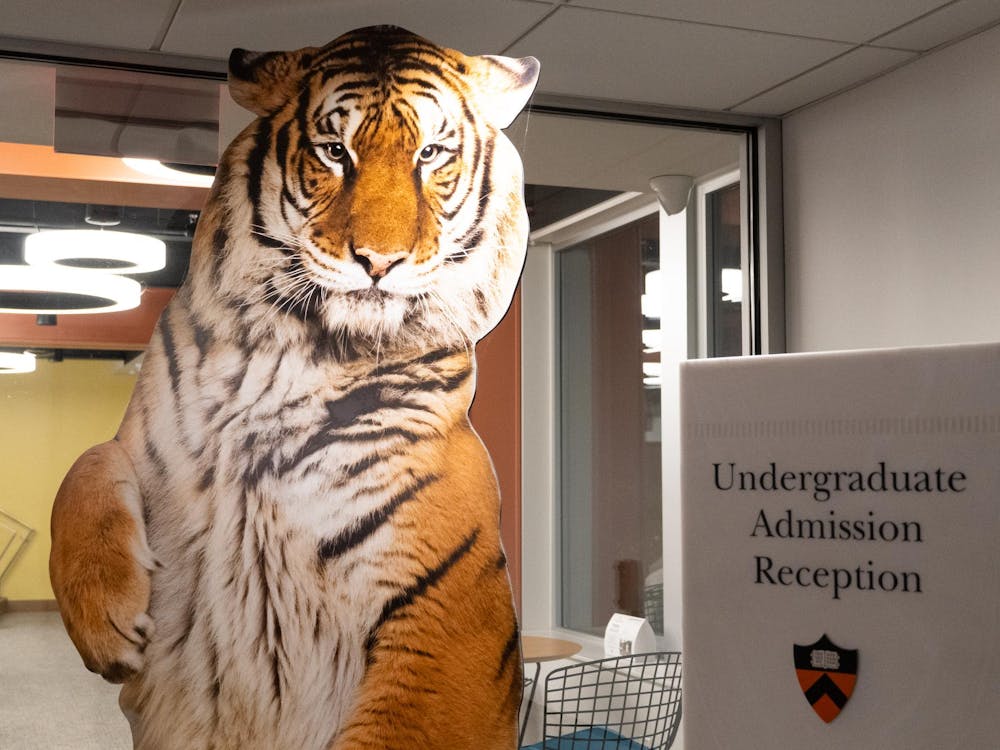After last fall’s vote to consolidate Princeton Borough and Princeton Township, the Mercer County Board of Elections redrew Princeton’s voting districts last December. Effective on Jan. 1, the new districting makes it possible for all undergraduate students to vote on campus.
Prior to consolidation, Election Day was hectic and confusing for some students who had registered to vote in the wrong municipality. This year, for the first time, all students will vote as citizens of the same town at polling places determined by a much-simplified district map.
“Now it’s less confusing because it’s all one,” Joanne Palmucci, chairwoman of the Mercer County Board of Elections, explained. “[Princeton residents] are happy with the consolidation, and I think they should be happy with the way we redistricted,” she added.
All students living in the undergraduate dormitories or in the Hibben-Magie and Lawrence graduate apartments are zoned in Princeton District No. 7. They will vote in Carl Icahn Laboratory. Students residing in the eating clubs belong to District No. 8 and will vote in the Computer Science Building.
Graduate students living farther from the main campus belong to other districts. Residents of the Stanworth Apartments belong to District No. 9 and will vote at Community Park School on Witherspoon Street. Those living in the Butler Apartments are included in District No. 19 and will vote at Riverside School on Riverside Drive.
The new district map makes voting simpler for the student body. In the past, undergraduates residing on the main campus were grouped into four different voting districts. Most students voted in Trinity Church on Mercer Street, while some residents of Whitman College, Butler College and Scully Hall voted in Carl Icahn Laboratory. Other residents of Forbes College voted off campus behind Borough Hall while residents of the eating clubs voted in the Computer Science Building.
University officials shared information about where students currently live and where they will live in future years with the Mercer County Board of Elections.
“In talking to them, we expressed some of the frustrations and concerns that we had seen when that Borough-Township line had existed,” University Director of Community and Regional Affairs Kristin Appelget explained. She particularly emphasized the difficulties students had experienced as a result of the cross-campus municipal line.
Because the Borough-Township boundary straddled the University campus, students had problems determining their residency in past years: Most students qualified as Borough residents, while many residents of Forbes, Butler and Whitman Colleges qualified as Township residents.
To make matters more confusing, the boundary bisects several dorm buildings, including Forbes College, South Baker Hall, Yoseloff Hall and Wilf Hall.
“It’s a big issue for hundreds of Princeton students that they’re not in a clear district,” College Democrats president Jarrah O’Neill ’13 said last October, while the Board of Elections was considering the redistricting.
For students living in dormitories bisected by the boundary, the division was especially mystifying.

“If you put your bed on one side of the dorm room, then you’re in the Township, and if you put your bed on the other side, you’re in the Borough, and you can never know that. It’s random,” O’Neill explained.
This confusion became particularly acute in the 2008 general election. Many students had mistakenly registered in the wrong municipality because county officials told them their dorms were in the wrong district.
Students who discovered on Election Day that they had registered in the wrong district were directed to the polling places of the other municipality and told to vote by provisional ballot.
“Some students went to the wrong polling place and were directed to go to the right one; a few went to the right polling place and were directed to go to the wrong one,” Scott Weingart ’09, who was president of College Democrats at the time of the 2008 election, explained in an email last fall. One student, who then lived in the Township but had previously voted in the Borough, was twice sent back and forth between polling places by confused voting officials.
The Board of Elections worked with Remington & Vernick Engineers to develop the new district map. Palmucci described the redistricting changes throughout the community as “the least invasive as possible,” saying that the board tried to keep like neighborhoods together and make only minimal changes to existing district lines.
“We’ve done an outstanding job for everyone concerned,” Palmucci said. “We haven’t had anything but praise so far.”







